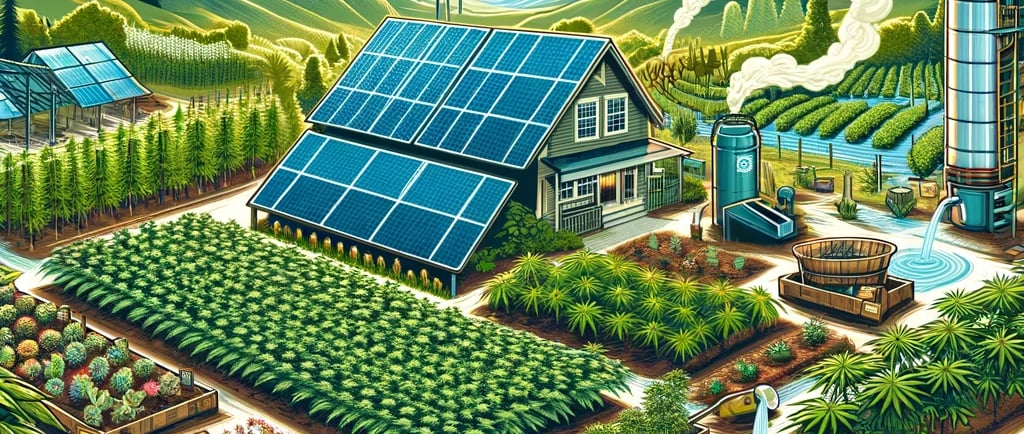Eco-Friendly Cannabis: Sustainable Practices in Cultivation
The cannabis industry is facing a critical juncture where the demand for eco-friendly and sustainable cultivation practices is higher than ever. As the legal cannabis market expands globally, the environmental impact of its cultivation has come under scrutiny. This article explores the green revolution within the cannabis industry, focusing on sustainable cultivation methods that minimize environmental footprint and promote ecological balance.
CANNABIS GUIDE
2/19/20242 min read


The Environmental Challenge
Cannabis cultivation, particularly indoor operations, can be resource-intensive. These practices have raised concerns over water usage, energy consumption, pollution, and carbon footprint. As the industry grows, so does the urgency to adopt more sustainable practices.
Water Conservation Techniques
Cannabis plants are known for their high water needs. However, innovative irrigation methods such as drip irrigation and the use of moisture sensors can significantly reduce water usage. Collecting rainwater and implementing closed-loop water systems are also effective strategies for minimizing water waste.
Energy-Efficient Lighting
Indoor cannabis cultivation relies heavily on artificial lighting, which can be a major energy consumer. Switching to LED lights, which use a fraction of the energy of traditional grow lights and emit less heat, can dramatically reduce energy consumption. Additionally, integrating solar panels and exploring renewable energy sources for power can further enhance sustainability.
Organic Cultivation Practices
The use of chemical fertilizers and pesticides in cannabis cultivation can have detrimental effects on the environment. Organic cultivation practices, including the use of natural pest control methods and organic nutrients, not only reduce environmental harm but also produce a healthier and often higher quality product.
Soil Health and Regenerative Agriculture
Healthy soil is the foundation of sustainable agriculture. Practices such as crop rotation, cover cropping, and the use of compost and organic matter can improve soil health, increase biodiversity, and sequester carbon. Regenerative agriculture goes a step further by aiming to restore ecosystems and enhance the resources it uses rather than depleting them.
The Role of Hemp
Hemp, a variety of the Cannabis sativa plant, plays a significant role in sustainable agriculture. Known for its rapid growth and minimal resource needs, hemp can be used for a wide range of products, from textiles and building materials to biofuels and bioplastics, making it a cornerstone of the eco-friendly cannabis movement.
Challenges to Adoption
Despite the clear benefits, the adoption of sustainable practices in cannabis cultivation faces several challenges. These include regulatory hurdles, the initial cost of implementing green technologies, and a lack of awareness and education among growers and consumers about sustainable options.
The Path Forward
The future of the cannabis industry lies in its ability to embrace sustainability. This requires a collective effort from growers, consumers, policymakers, and industry stakeholders to prioritize environmental responsibility. By investing in research, education, and the development of green technologies, the cannabis industry can lead the way in sustainable agriculture.
Conclusion
Eco-friendly cannabis cultivation represents a promising intersection of environmental stewardship and industry innovation. As the cannabis market continues to grow, adopting sustainable practices is not just an ethical imperative but a viable strategy for long-term success. The industry has the opportunity to set a precedent for sustainable agriculture and contribute positively to the global environmental landscape.
